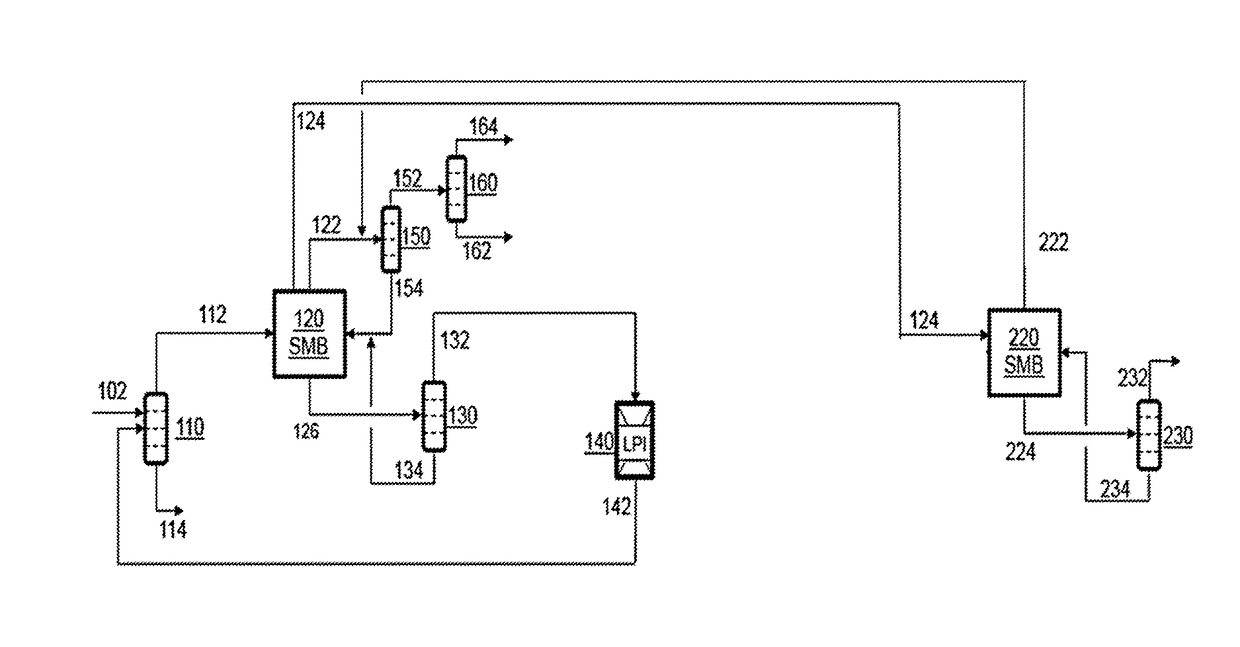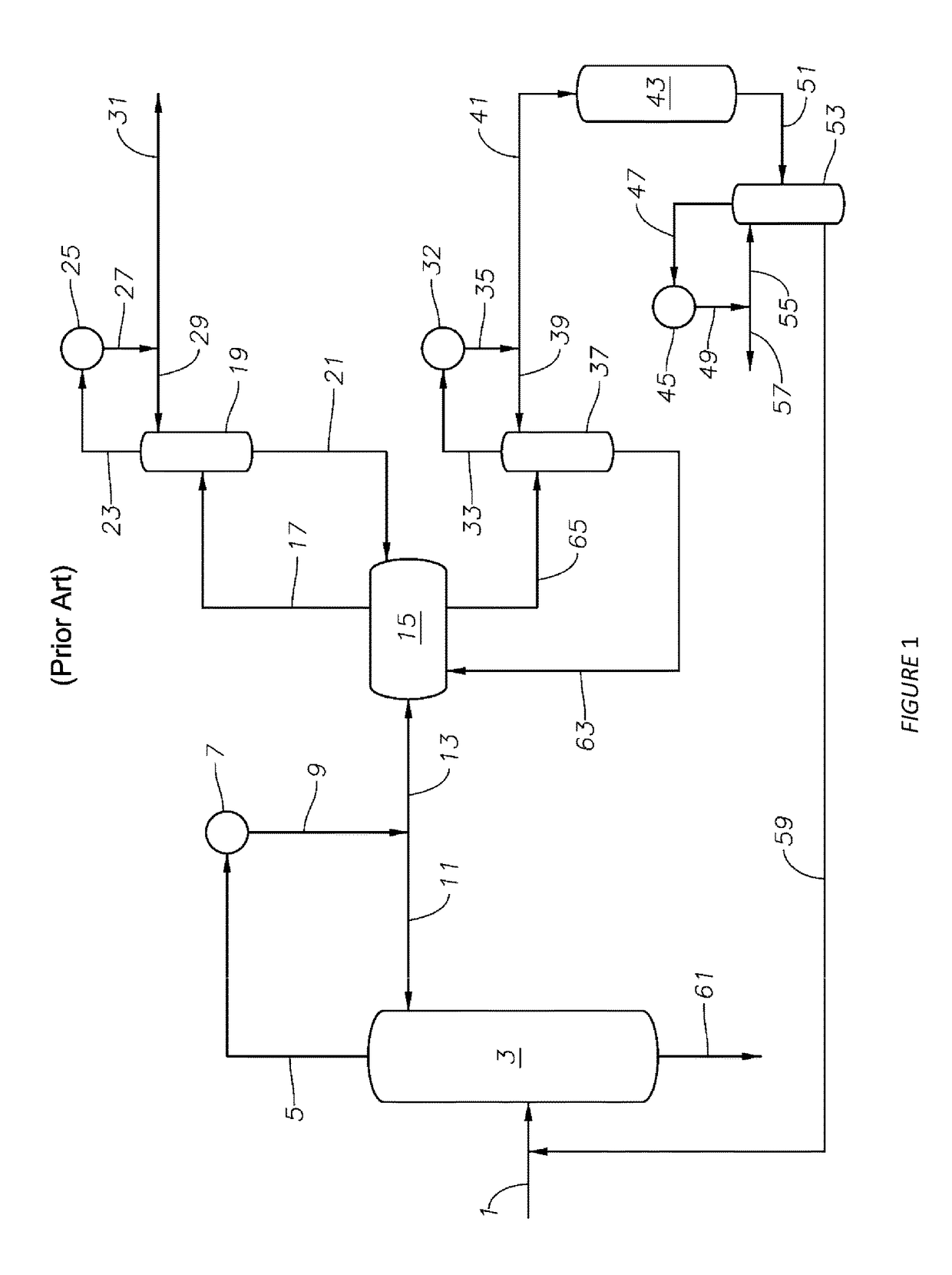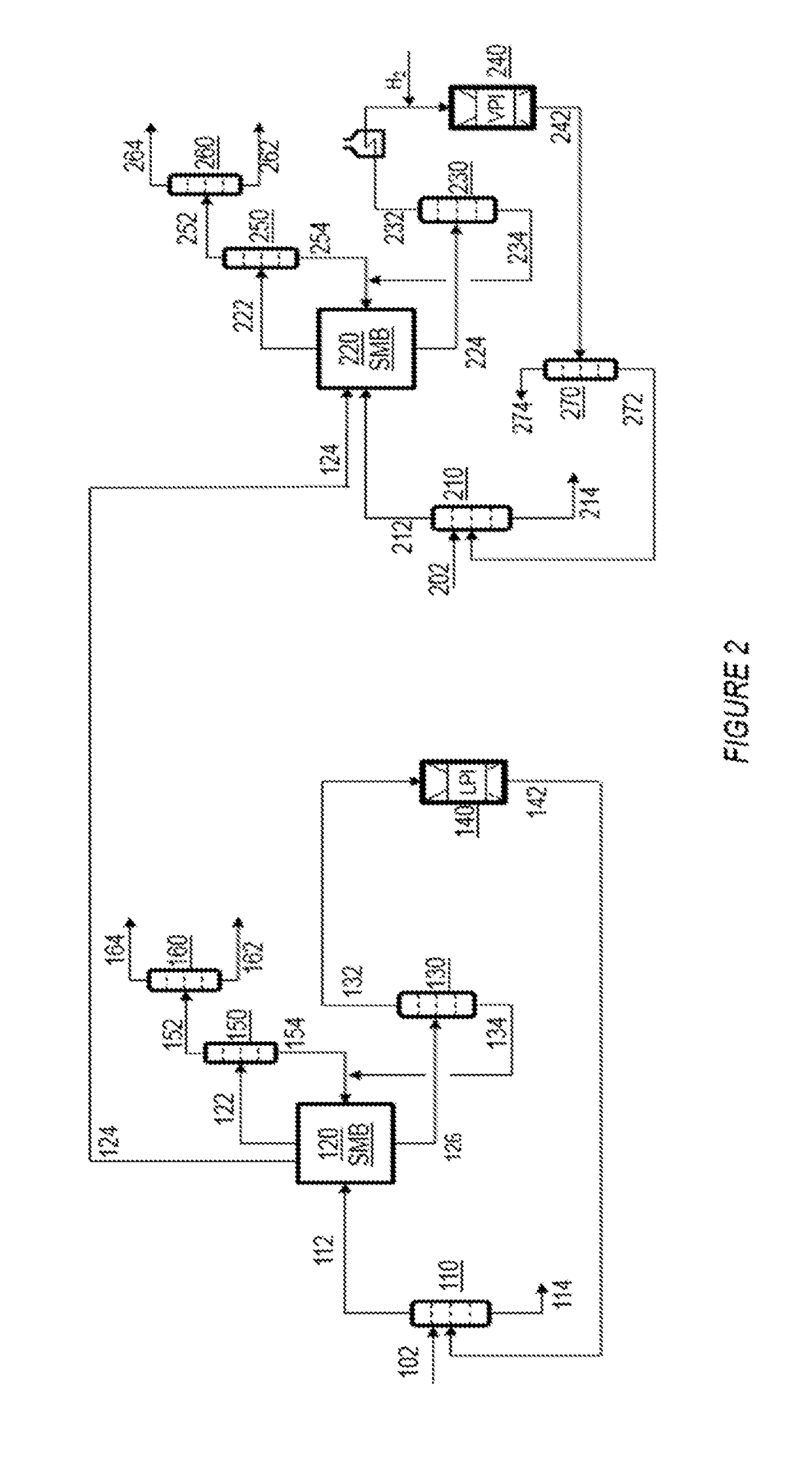Processes for Recovering Paraxylene
a paraxylene and recovery technology, applied in the field of paraxylene recovery technology, can solve the problems of px production limitation, vapor phase isomerization, and the number of major technical challenges to be overcome, so as to reduce the buildup in the isomerization loop, reduce the amount of energy and capital, and save energy and capital
- Summary
- Abstract
- Description
- Claims
- Application Information
AI Technical Summary
Benefits of technology
Problems solved by technology
Method used
Image
Examples
example 1
[0090]In this Example, additional constraints were imposed to ensure 15 wt % of the total amount of EB fed into the SMB system was recovered in the EB-rich extract stream (Extract2), and less than 1.0 wt % of the total OX and MX in the feed were recovered in Extract2. At least 15 wt % EB recovery in Extract2 minimizes EB build up in the xylene loop using liquid phase isomerization, allowing for significant energy savings by eliminating vapor phase isomerization. The corresponding EB composition in the feed to the SMB system increases to 14 wt % due to EB recycle from the isomerization units.
[0091]FIG. 5 shows the concentration profile within the SMB system at the beginning of a step. The system is divided into five zones based on the two inlet streams and three outlet streams. The locations of the feed and desorbent inlets and raffinate and extract outlets are shown with arrows. The PX-rich extract stream (Extract1) and EB-rich extract stream (Extract2) are withdrawn from the upstre...
example 2
[0094]In this Example, additional constraints were imposed to ensure 25 wt % of the total amount of EB fed into the SMB system was recovered in the EB-rich extract stream (Extract2), and less than 2.5 wt % of the total OX and MX in the feed were recovered in Extract2. At least 15 wt % EB recovery in Extract2 minimizes EB build up in the xylene loop using liquid phase isomerization, allowing for significant energy savings by eliminating vapor phase isomerization. The corresponding EB composition in the feed to the SMB system increases to 14 wt % due to EB recycle from the isomerization units.
[0095]FIG. 6 shows the concentration profile within the SMB system at the beginning of a step. The system is divided into five zones based on the two inlet streams and three outlet streams. The locations of the feed and desorbent inlets and raffinate and extract outlets are shown with arrows. The PX-rich extract stream (Extract1) and EB-rich extract stream (Extract2) are withdrawn from the upstre...
PUM
| Property | Measurement | Unit |
|---|---|---|
| pressure | aaaaa | aaaaa |
| temperature | aaaaa | aaaaa |
| temperature | aaaaa | aaaaa |
Abstract
Description
Claims
Application Information
 Login to View More
Login to View More - R&D
- Intellectual Property
- Life Sciences
- Materials
- Tech Scout
- Unparalleled Data Quality
- Higher Quality Content
- 60% Fewer Hallucinations
Browse by: Latest US Patents, China's latest patents, Technical Efficacy Thesaurus, Application Domain, Technology Topic, Popular Technical Reports.
© 2025 PatSnap. All rights reserved.Legal|Privacy policy|Modern Slavery Act Transparency Statement|Sitemap|About US| Contact US: help@patsnap.com



